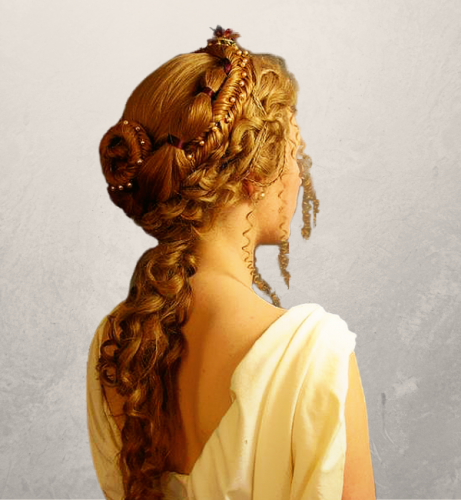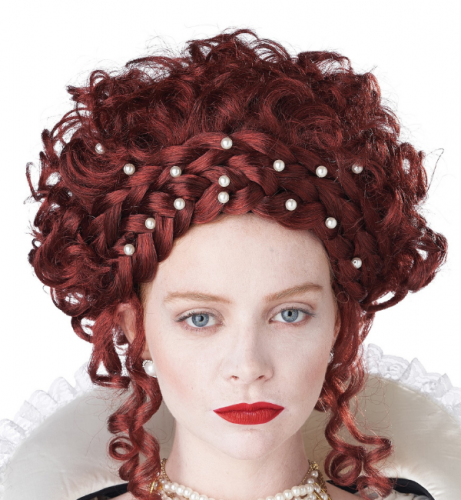Having a fascinating look is a dream of every woman. The obsession with beauty dates back to ancient times. Nowadays, it’s hard to imagine how girls took care of their image without modern cosmetics. However, women always wanted to be beautiful — from painting lips to dyeing hair was their significant embellishment. The means women used to ensure their perfect looks may seem bizarre to us, but they were ideal for their time.
Each epoch has its vision of beauty at glory, including hair dyeing. When did the history of dying hair begin? How did they achieve the desired hues? What pushed them to do it — vanity, social status, fashion, or something else? Scroll down the article to learn the answers.
How People Dyed Their Hair?
Who and when exactly started to dye one’s hair is obscure, but one thing is sure — they colored their hair using incredible decoctions of roots, herbs, leaves, leeches, oils, etc. The history of dyeing hair differs from country to country.
Black Hair in Ancient Egypt
In ancient Egypt, dark hair was not only a beauty ideal, but it also symbolized power. To get a black color, it was enough to mix henna with the indigo plant. Lovers of natural coloring still use this recipe.
A grey hair solution was to shave it entirely and put on a wig dyed with henna. For reaching the desired effect, the Egyptians also used lead-based dyeing techniques. How? To get the paste, they mixed lead with lime and water.
At those times, people were either unaware of the possible dangers of lead or didn’t care about the beauty products' safety. Just imagine, they put lead not only on their heads but also on their eyes!
Blonde Hair in Ancient Rome
The Romans were all eager to dye their hair. They used fermented leeches for achieving darker hues.
In ancient Rome, blonde and red were also trendy, and all the tarts needed to have blonde hair. They got the color by mixing the ashes of burned plants and nuts. Another way of making dark hair brighter was a mixture of lemon, wood ashes, and sour milk.
Red hues were achieved using henna or onion husks.
Golden Hues in Ancient Greece
The ancient Hellenes were mostly dark-haired, but hair with golden hues was considered the icon of beauty. They painted the locks with a mixture of potash and yellow flowers. Can you imagine how those to whom potash was not available achieved the golden shades? They got the hue using cow’s urine. As the old saying goes, “The beauty knows no pain”!
Red Beards in Viking Times
Ancient Vikings used a special soap to lighten their hair or beard as reddish hues were fashionable. The soap they used was made from goat fat and ashes.
Red Hair During the Elizabethan Era
Earlier, red-haired women were considered witches; but things changed when Queen Elizabeth I came into power. Her bright red hair became very trendy not only in England but also in other countries of Europe. The richest ladies gave a go to a mixture of saffron and sulfur to achieve the desired effect; The mess had a very unpleasant smell.
Currently, dyeing techniques allow women all over the world to find a proper look. The number of new companies specialized in hair color increases, giving women a chance to have utterly fantastic hair color in tune with the newest trends as there is no limit to perfection.
Each epoch has its vision of beauty at glory, including hair dyeing. When did the history of dying hair begin? How did they achieve the desired hues? What pushed them to do it — vanity, social status, fashion, or something else? Scroll down the article to learn the answers.
How People Dyed Their Hair?
Who and when exactly started to dye one’s hair is obscure, but one thing is sure — they colored their hair using incredible decoctions of roots, herbs, leaves, leeches, oils, etc. The history of dyeing hair differs from country to country.
Black Hair in Ancient Egypt
In ancient Egypt, dark hair was not only a beauty ideal, but it also symbolized power. To get a black color, it was enough to mix henna with the indigo plant. Lovers of natural coloring still use this recipe.
A grey hair solution was to shave it entirely and put on a wig dyed with henna. For reaching the desired effect, the Egyptians also used lead-based dyeing techniques. How? To get the paste, they mixed lead with lime and water.
At those times, people were either unaware of the possible dangers of lead or didn’t care about the beauty products' safety. Just imagine, they put lead not only on their heads but also on their eyes!
Blonde Hair in Ancient Rome
The Romans were all eager to dye their hair. They used fermented leeches for achieving darker hues.
In ancient Rome, blonde and red were also trendy, and all the tarts needed to have blonde hair. They got the color by mixing the ashes of burned plants and nuts. Another way of making dark hair brighter was a mixture of lemon, wood ashes, and sour milk.
Red hues were achieved using henna or onion husks.
Golden Hues in Ancient Greece
The ancient Hellenes were mostly dark-haired, but hair with golden hues was considered the icon of beauty. They painted the locks with a mixture of potash and yellow flowers. Can you imagine how those to whom potash was not available achieved the golden shades? They got the hue using cow’s urine. As the old saying goes, “The beauty knows no pain”!
Red Beards in Viking Times
Ancient Vikings used a special soap to lighten their hair or beard as reddish hues were fashionable. The soap they used was made from goat fat and ashes.
Red Hair During the Elizabethan Era
Earlier, red-haired women were considered witches; but things changed when Queen Elizabeth I came into power. Her bright red hair became very trendy not only in England but also in other countries of Europe. The richest ladies gave a go to a mixture of saffron and sulfur to achieve the desired effect; The mess had a very unpleasant smell.
Currently, dyeing techniques allow women all over the world to find a proper look. The number of new companies specialized in hair color increases, giving women a chance to have utterly fantastic hair color in tune with the newest trends as there is no limit to perfection.





